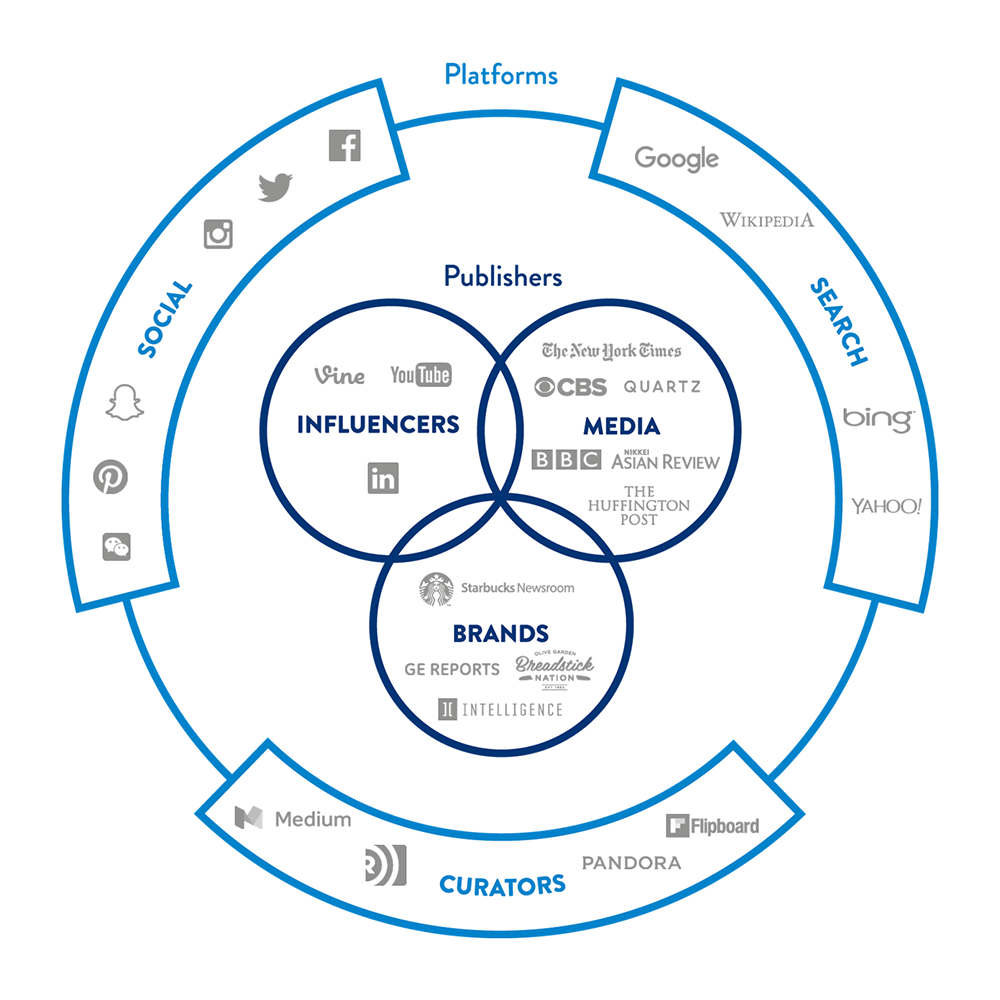Strategies That Extend the Lifecycle of a Narrative
A version of this post previously appeared in AdvertisingAge.
One of the greatest challenges that communications and marketing professionals will face in the foreseeable future is in extending (or redirecting) the lifecycle of a narrative.
There are at least three major trends that are impacting how content is discovered, consumed and monetized and these will make storytelling even more challenging in the future. Specifically, these include:
- Media proliferation - infinite content, yet finite attention
- Social personalization - content flowing via the lens of friends
- Advertising frustration - ad blocking, viewability and bot fraud
This is something we think deeply and care about at Edelman. And while we have deep specialists, we also embrace holistic systems thinking in seeing how different parts of the ecosystem fit together. We build these into our plans.
The EDELMAN CLOVERLEAF™ framework is an asset that helps guide our thinking here. It is the firm’s holistic point of view on the evolving media and content landscape. The EDELMAN CLOVERLEAF, which first launched in 2011 as the Media Cloverleaf™, has been updated based on changes to the ecosystem. It now features two overlapping spheres of influence – one for platforms and one for publishers:
- Platforms are technology hubs where most content discovery now starts. These dominate the digital day and include social networks / messaging services, search engines and personalized news curators
- Publishers are groups of content creators. These include traditional and digital-native news organizations, platform-savvy influencers plus content and digital experiences built by brands
With this in mind, today we are publishing the first Edelman Cloverleaf Forecast. The point of view deck includes five strategies marketers will need to embrace to ensure their communications marketing narratives are discoverable around the entire ecosystem. It is based on more than two dozen in-depth interviews we conducted across all six parts of the ecosystem, as we see it.
Those strategies include:
- Develop social storylines.Social media is now the primary means of means of discovery. However, news you read is often different than news you say you read. This requires embracing a social-by-design approach to storytelling from the outset that can elevate a consumer's identity.
- Embrace distribution-centric thinking.This means that brands will need to partner with publishers, influencers and others to scale a program's digital surface area.
- Drive to earned media.Build programs that create owned media for the primary purpose of driving earned media. Original content is increasingly the "lead domino" that knocks over others and begins a virtuous cycle of conversations.
- Create a single narrative.Ensure that a singular narrative is carved up and hand-crafted to fit in the spaces where it will ultimately be discovered, shared and consumed.
- Focus on creating canonical content.High-interest, high-quality stories that are unavailable anywhere else often will find an audience because it is scarce.
We encourage you to peruse this deck below and share your feedback on how, together, we might think about one of the greatest, yet perhaps unheralded, challenges that communications and marketing professionals now face.
(The full interviews were conducted as part of my CBS Radio Content Convergence podcast, which you can listen to at http://play.it/convergence).
Steve Rubel is Edelman’s chief content strategist.





